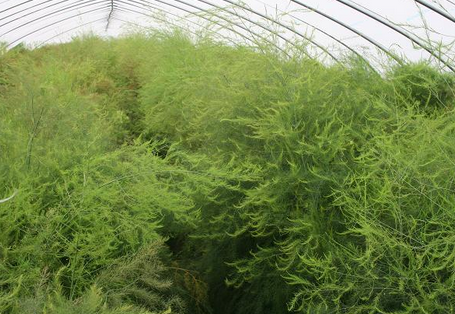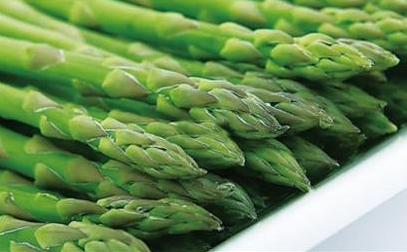Asparagus is more resistant to cold and drought, and is suitable for chlorine and alkali resistance. It is suitable for growing in sandy loam and loam with deep soil layer, high organic matter content, good permeability and water repellency, and good drainage and irrigation conditions. Soil preferably neutral pH, acidic soil below 5.5 or greater than 8 and a weight average saline should not be cultivated.
[requires fertilizer law]
The normal growth of asparagus requires a variety of nutrients. Among the large amounts of elements, there are more nitrogen and potassium, and less phosphorus. Among the trace elements, calcium, zinc, manganese and chlorine are indispensable.
In the central and southern Yunnan, the asparagus (that is, more than 2 years old) entering the bamboo shooting period, the bamboo shooting period and the autumn harvest period are each 3 to 4 months. The experiment proves that about 17 kg of pure nitrogen is needed for each 1000 kg of asparagus produced; phosphorus 4.5 Kg; potassium 15 kg. The ratio of its three elements is approximately 3.8:1:3.3. Specific fertilization method: The organic fertilizer is re-applied at the beginning of the year, while the chemical fertilizer is light and heavy.

[Scientific Fertilization]
Skillfully apply germination fertilizer: all organic fertilizer can be re-applied once, or 80% of the total amount can be applied. The annual yield of 1000 kg of asparagus per acre requires the use of roots (CL) 25-5-15. 50 kg of asparagus special fertilizer, combined with spring bamboo shoots loose soil, 30 to 40 cm from the side of the plant line, open 10 cm ditch into the buried soil to seal.
Replenishing the relay fertilizer: During the four months of the harvesting period, the relay fertilizer must be applied several times. The initial temperature of the bamboo shoots is low, and the soil can be drained. With the increase of temperature, it can be combined with irrigation. It is recommended to use water to adjust fertilizer. It is recommended to apply 150 kg of special fertilizer for each acre (CL) 25-5-15 asparagus, and then use the special long-acting water-soluble fertilizer for “long good†asparagus.
Reapply autumn fertilization: After the end of the asparagus, the stems will be replanted, and the autumn fertilizer will be applied again. The central and southern regions of the region are generally from late August to early September. Applying 70 kg of asparagus special fertilizer to the roots (CL) 22-10-10 per acre ditch, and applying the remaining organic fertilizer.

[Pests and diseases]
The disease is mainly asparagus stem blight, so far there is no cure for this disease, it can only be prevented.
Soil disinfection: use 50% of the Familia double powder 2 kg, mix 50 kg of fine soil, combined with phoxim granules or chlorpyrifos granules to kill underground pests, once applied to the ground. It can also be applied by ditch or hole.
Thoroughly clearing the garden: The stems and stems of the upper part of the bamboo shoots are transported out of the field for harmless treatment. The winter and spring clearing gardens are as important as the autumn and clearing of the stems.
Medicinal root irrigation: 45% of Schnein's 300 times solution can be used to fill the roots.
From the end of May to the end of August, it is necessary to spray the fungicides several times, such as methotrexate, carbazole, etc., and spray it in time after rain. It can also be used alternately with 1 or 2 times of copper preparation. Protective function.
Pests mainly refer to underground pests: generally the same method as the fungicide. The above-ground pests are mainly noctual pests, such as beet armyworm, cotton bollworm, etc., and can be sprayed with pyrethroid pesticides and chlorpyrifos.
Organic Peeled Garlic,Organic Fresh Peeled Garlic Cloves,Roasted Garlic Cloves Peeled,Organic Peeled Garlic For Sale
shandong changrong international trade co.,ltd. , https://www.changronggarliccn.com